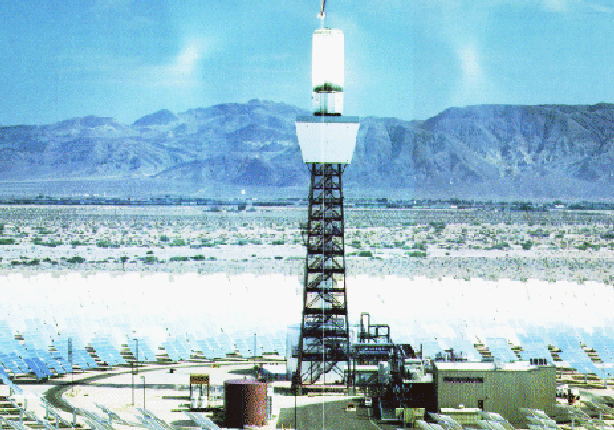The STACEE project involves using a central tower solar plant asthe physical basis for a telescope capable of detecting gamma ray showers downto 30 GeV. The telescope will use the heliostat field covering several hundredsquare meters of the desert basin at the Solar II power plant in Barstow, CA. A secondary mirror and set of photosensitive detectors will be placed in thecentral tower below the point where the sun is focused during the daytime. During the nightime hours the heliostat filed can be used to focus light from agamma ray shower towards the detector. The advanctes of this design are thevery large reflection area, the large area of coverage on the ground, and thefact that all of the light comes to a single point. The disadvantages are thatthe optics add a great deal of complexity to the situation, and that the lightfrom a single shower reaches the detector at a different time depending on howfar away the heliostat is located.During the summer of 1996, Chris Gottbrath put together a program to aid inanalyzing the optical design possibilities and in investigating what theexpected results are from the telescope. This program traces the path of eachphoton through the telescope during a shower and creates a database of thosephontons that reach the detector. This program will be sued to investigate thepossibilities of using wave fron timing information for optical configuration. It is also ideally suited for investigating the telescopes sensitivity, energythreshold, and ability to distinguish gamma rays from background cosmic rays.

